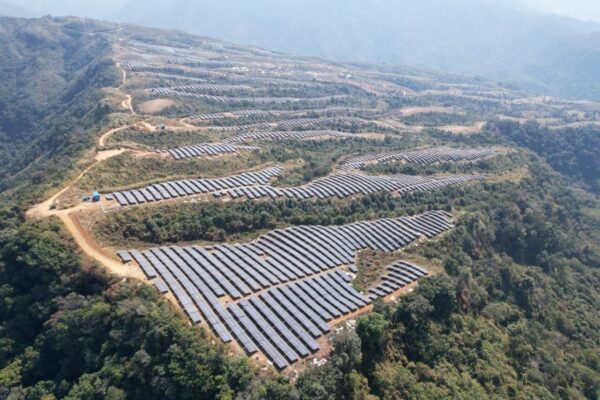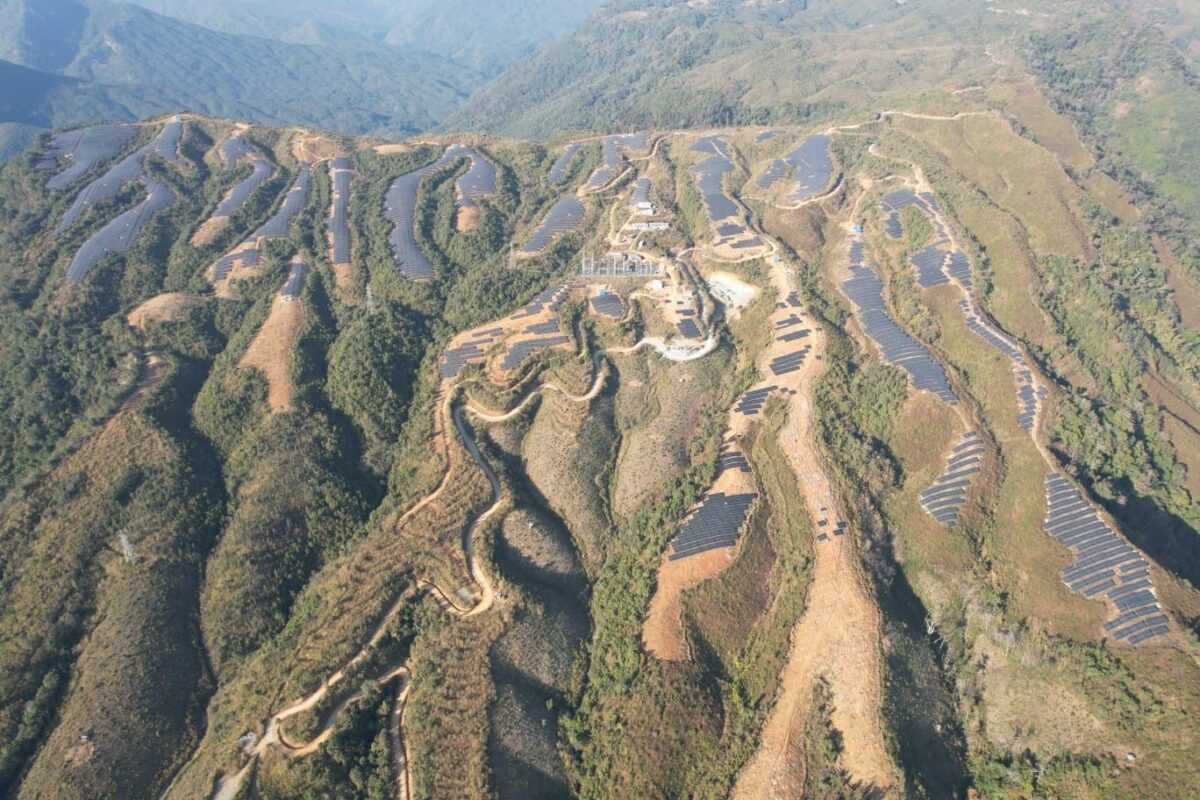The hilly state of Mizoram now hosts a 28 MW DC (20 MW AC) solar power plant defying the challenge of sloping, uneven terrain with narrow strips of land separated by gorges. The plant is shaped like a hand palm with 15 solar array fingers connected by a perimeter road and a 33kV transmission line for power evacuation.
The solar park is located near Vankal village in the Khawzawl district. It spans 194 acres, with around 100 acres available for solar plant installation and the remaining area consisting of a gorge and steep valley. The uneven terrain of the site makes it difficult to install solar panels in a way that maximizes their exposure to sunlight. The PV modules’ orientation and angle needed to be adjusted to account for the slope of the terrain.
“The plant is shaped like a hand palm with 15 fingers connected by a perimeter road and 33kV transmission line for power evacuation to maximize module installation while minimizing shading effectively. Overall, our thoughtful approach to the design of the entire solar power plant should help us achieve optimal energy production and efficiency,” Kamalesh Saraswat, DGM-Engineering (solar & module line infra.), SAEL Ltd, told pv magazine.
SAEL, through its wholly owned subsidiary Sunfree North East Renewable Energy, has signed a 25-year power purchase agreement with the power and electricity department of the Mizoram government. SAEL’s in-house EPC team executed the plant installation and commissioning.

Saraswat said the major challenge before their team was identifying the plant area where they could install the module mounting structure easily and achieve the desired capacity of the plant as per the agreement with the client [PED Mizoram].
“Our team conducted a contour and drone survey of the entire area to identify the flat area, gorge, and steep valley area and optimize module angle through our latest software and tools. We also followed the natural contour and minimized the steep area to reduce mismatch losses/efficiency of the plant,” said Saraswat.
Further, Mizoram experiences high winds and heavy rainfall, which can damage or dislodge solar modules. So, the SAEL team provided additional structural support to ensure the panels remained securely in place. The module mounting structure differs from conventional flat-terrain solar power plants.
The plant is built with high-efficiency mono-PERC modules and high-wattage string inverter. Further, containerized solution for the LT/HT switchgear room has been used to ensure optimal temperature and ingress protection.
This content is protected by copyright and may not be reused. If you want to cooperate with us and would like to reuse some of our content, please contact: editors@pv-magazine.com.









By submitting this form you agree to pv magazine using your data for the purposes of publishing your comment.
Your personal data will only be disclosed or otherwise transmitted to third parties for the purposes of spam filtering or if this is necessary for technical maintenance of the website. Any other transfer to third parties will not take place unless this is justified on the basis of applicable data protection regulations or if pv magazine is legally obliged to do so.
You may revoke this consent at any time with effect for the future, in which case your personal data will be deleted immediately. Otherwise, your data will be deleted if pv magazine has processed your request or the purpose of data storage is fulfilled.
Further information on data privacy can be found in our Data Protection Policy.